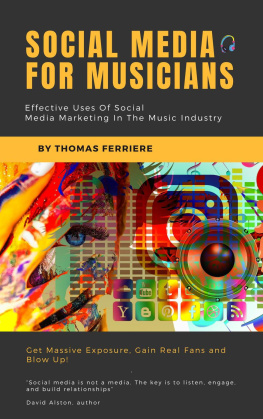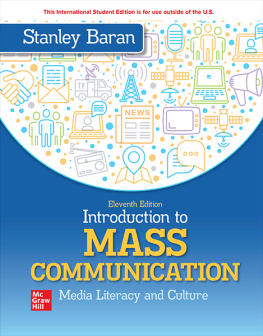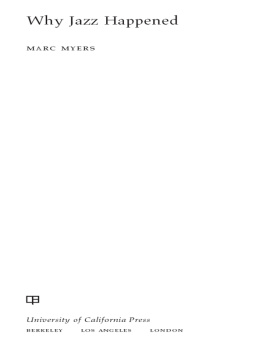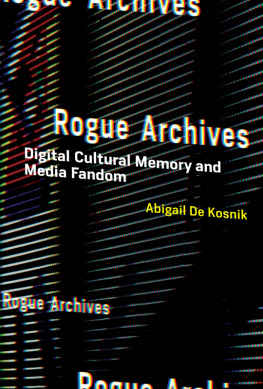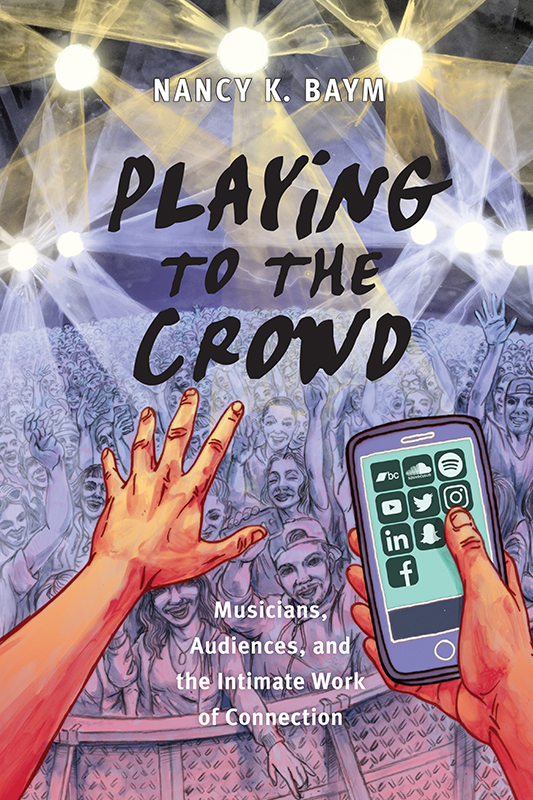
Playing to the Crowd
POSTMILLENNIAL POP
General Editors: Karen Tongson and Henry Jenkins
Puro Arte: Filipinos on the Stages of Empire
Lucy Mae San Pablo Burns
Spreadable Media: Creating Value and Meaning in a Networked Culture
Henry Jenkins, Sam Ford, and Joshua Green
Media Franchising: Creative License and Collaboration in the Culture Industries
Derek Johnson
Your Ad Here: The Cool Sell of Guerrilla Marketing
Michael Serazio
Looking for Leroy: Illegible Black Masculinities
Mark Anthony Neal
From Bombay to Bollywood: The Making of a Global Media Industry
Aswin Punathambekar
A Race So Different: Performance and Law in Asian America
Joshua Takano Chambers-Letson
Surveillance Cinema
By Catherine Zimmer
Modernitys Ear: Listening to Race and Gender in World Music
Roshanak Keshti
The New Mutants: Superheroes and the Radical Imagination of American Comics
Ramzi Fawaz
Restricted Access: Media, Disability, and the Politics of Participation
Elizabeth Ellcessor
The Sonic Color-line: Race and the Cultural Politics of Listening in the U.S.
Jennifer Lynn Stoever
Diversin: Play and Popular Culture in Cuban America
Albert Sergio Laguna
Antisocial Media: Anxious Labor in the Digital Economy
Greg Goldberg
Open TV: Innovation Beyond Hollywood
Aymar Jean Christian
Playing to the Crowd: Musicians, Audiences, and the Intimate Work of Connection
Nancy K. Baym
Playing to the Crowd
Musicians, Audiences, and the Intimate Work of Connection
Nancy K. Baym

NEW YORK UNIVERSITY PRESS
New York
NEW YORK UNIVERSITY PRESS
New York
www.nyupress.org
2018 by New York University
All rights reserved
References to Internet websites (URLs) were accurate at the time of writing. Neither the author nor New York University Press is responsible for URLs that may have expired or changed since the manuscript was prepared.
Library of Congress Cataloging-in-Publication Data
Names: Baym, Nancy K., author.
Title: Playing to the crowd : musicians, audiences, and the intimate work of connection / Nancy K. Baym.
Description: New York : New York University Press, [2018] | Series: Postmillennial pop | Includes bibliographical references and index.
Identifiers: LCCN 2017045025 | ISBN 9781479896165 (cl : alk. paper) | ISBN 9781479821587 (pb : alk. paper)
Subjects: LCSH : Popular musicSocial aspects. | MusicPerformancePsychological aspects. | Popular music fans.
Classification: LCC ML3918.P67 B39 2018 | DDC 781.64dc23
LC record available at https://lccn.loc.gov/2017045025
New York University Press books are printed on acid-free paper, and their binding materials are chosen for strength and durability. We strive to use environmentally responsible suppliers and materials to the greatest extent possible in publishing our books.
Manufactured in the United States of America
10 9 8 7 6 5 4 3 2 1
Also available as an ebook
In the past bands could disappear for four years and live in a mansion somewhere, and people were just happy when they did come down from their Ivory Tower and release a record and allow you to go and buy it. Now I think that its important that you engage with your listeners all the time.
Roger ODonnell, The Cure
You cant just show up and be a rock star and not put the effort into showing your fans you care anymore. Before you were able to just be a rock star, be aloof, be a drug addict, go on tour and it was cool. You were cooler for it. Now you have to put in a lot of work to keep them interested.
Sydney Wayser, singer-songwriter
Now people expect you to reply to them. They expect you to respond to their tweets. Its not like Oh My God! She actually wrote back! Its like of course you wrote back.
Zo Keating, cellist and composer
In the old days pop stars, rock stars used to just drop out of the sky, didnt they? And now, theyre tweeting about what they had for breakfast or, you know, whatever. Interesting days though. Its one of those things I suppose people are still trying to find out. Where to draw the boundaries and what works and what doesnt, you know?
Mark Kelly, Marillion
Contents
Figure I.1. Zo Keating, performing at the Intel booth, Consumer Electronics Show, 2011
Figure 1.1. Kristin Hersh
Figure 1.2. Stuart Braithwaite, 2011
Figure 1.3. Michael Timmins
Figure 1.4. Nacho Vegas, LAuditori, Barcelona, January 2009
Figure 1.5. Greta Morgan, The Pike Room, Pontiac, Michigan
Figure 1.6. Billy Bragg at SXSW, 2008
Figure 1.7. Jill Sobule and Steve Lawson at All2Gether Now, Berlin
Figure 1.8. Richie Hawtin performing as Plastikman
Figure 3.1. Mark Kelly
Figure 3.2. Turbojugend at a Turbonegro show in the Netherlands, 2016
Figure 3.3. Great Moments in Rock 'n' Roll
Figures 3.4 and 3.5. Tape trading, 1986
Figure 3.6. Sivert Hyem
Figures 4.1 and 4.2. Happy Tom
Figure 4.3. Stephen Mason
Figure 4.4. Lloyd Cole, 2012
Figure 4.5. David Lowery with Cracker and Camper Van Beethoven at the merchandise table
Figure 4.6. Kate Schutt
Figure 5.1. Honeychild Coleman
Figure 5.2. Roger ODonnell of the Cure, in concert in Boise, Idaho, 2016
Figure 5.3. Brian Travers
Figure 6.1. Erin McKeown
The Intimate Work of Connection
The relationship between musicians and their audiences has changed. No more disappearing into skies or mansions, todays musicians are earthbound, under pressure to build connections with listeners. Audiences, especially those who came of age in a time of ubiquitous media, expect the musicians they follow to be constantly accessible, especially on social media, offering unique and intimate moments to their fans. today musicians relentlessly seek relationships with audiences, following listeners from platform to platform, trying to establish a presence for themselves and build connections. Day in and day out, the work of relating is never done. People are so busy, says the savvy young songwriter Greta Morgan, If you cant find a way to sneak into their daily routine, theyll miss your show.
The music industries of the second half of the twentieth century were never really stable, but for many working within and around major and independent record labels, they came to feel natural. The path for a certain kind of musician to make playing into a steady gig was unfair and unlikely, but it was clear. You got a band together, you made demos, you performed. If you were lucky, you got discovered by the A&R (artist and repertoire) guy from a record label. The label would pay you up front and then finance, distribute, and publicize your work. Fame and fortune would follow.
Brian Travers, saxophone player with the British band UB40, was one of the lucky few who made an enduring career in this system. In 1983, several years after they first started playing together, their cover of Neil Diamonds Red, Red Wine, recast as a smooth reggae number, became a breakout hit. The band, two siblings and a bunch of friends from the working-class town of Birmingham, went on to sell more than 70 million records. To their shock and continuing confusion, they got rich. They dont have all their original members, but theyre still going, and they still draw huge crowds.
Next page

